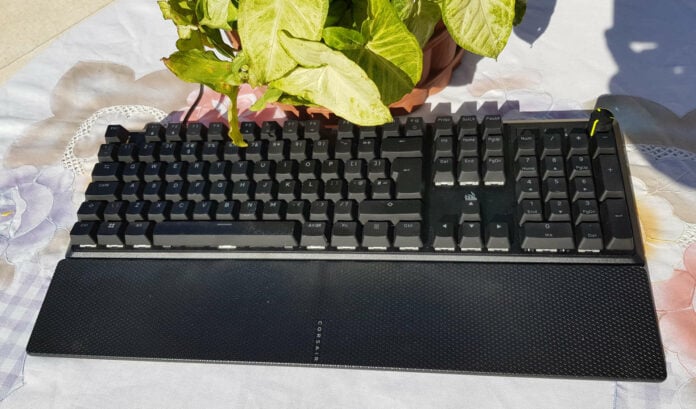With mechanical keyboards now mainstream, offering a compelling product is a little harder than slapping the words ‘mechanical’ or ‘Cherry MX’ on the box. To stand out from the crowd, Corsair focuses on what makes mechanical keyboards worth the extra money: the typing experience.
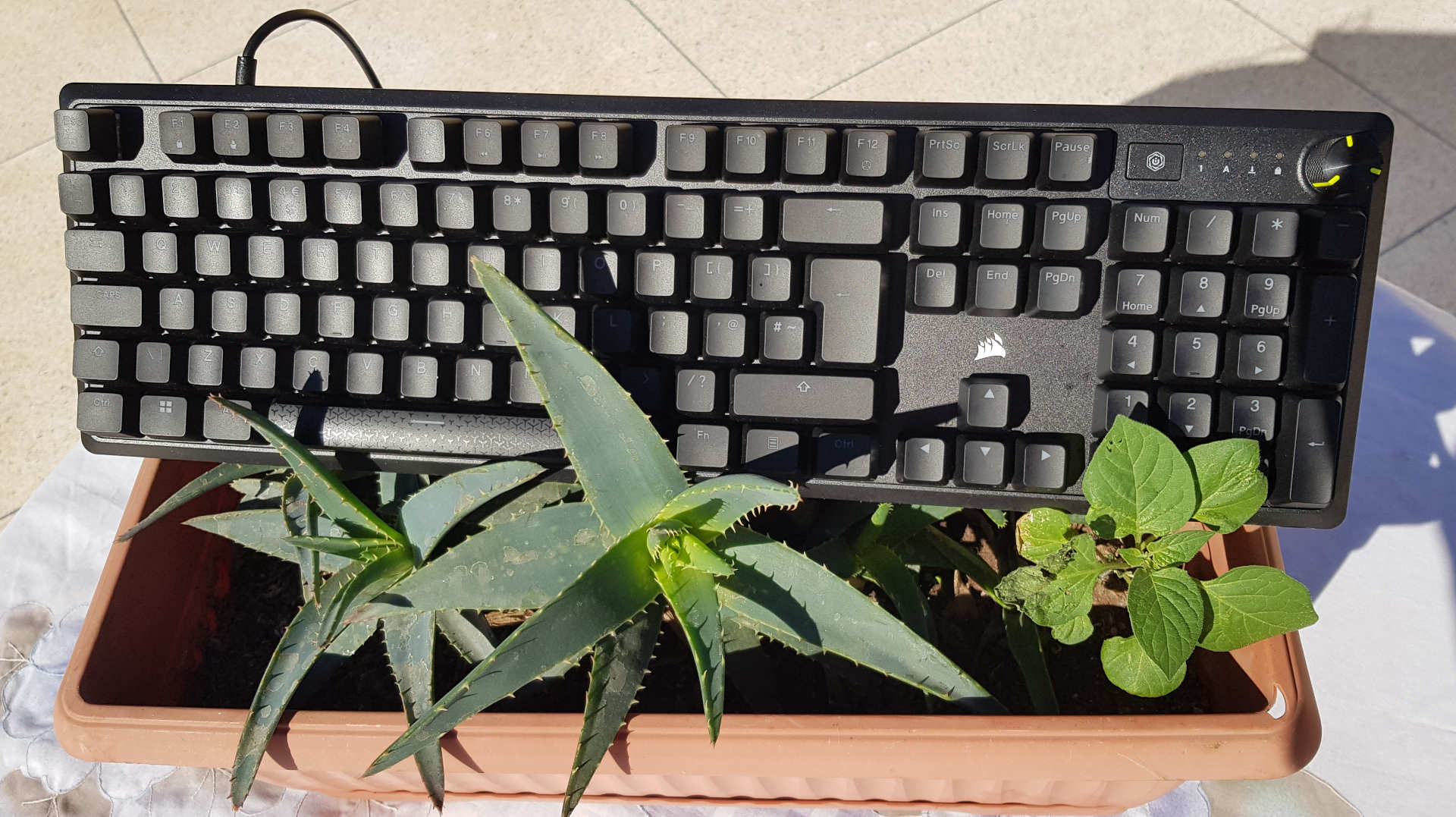

Corsair K70 RGB Core
£90
Pros
- Fantastic typing experience
- Pre-lubed switches
- Good acoustics
- Per-key RGB
Cons
- Harsh wrist rest
- Fixed USB cable
Club386 may earn an affiliate commission when you purchase products through links on our site.
How we test and review products.
Corsair K70 Core offers pre-lubed switches sitting on top of a foam-dampening layer, resulting in both a nice feel when typing and reduced clicking noise. Better yet, it doesn’t cost an arm and a leg, with prices starting at £89.99 for the model without a wrist rest.
Switches
Opening with the star of the show: Corsair’s MLX linear red switches. These clickers feature a 45g actuation force alongside a 1.9mm actuation distance and a 4.0mm total travel distance. They’re rated for 70 million keystrokes and come pre-lubricated from the factory. The K70 Core also boasts 100% anti-ghosting and full N-key rollover.
While lubricating mechanical switches has been popular among enthusiasts for some time, regular users may see the task of lubing each one manually as a bit tedious. Corsair solves this issue by pre-applying lubricant during manufacturing, so the end user can enjoy its benefits without thinking about it.
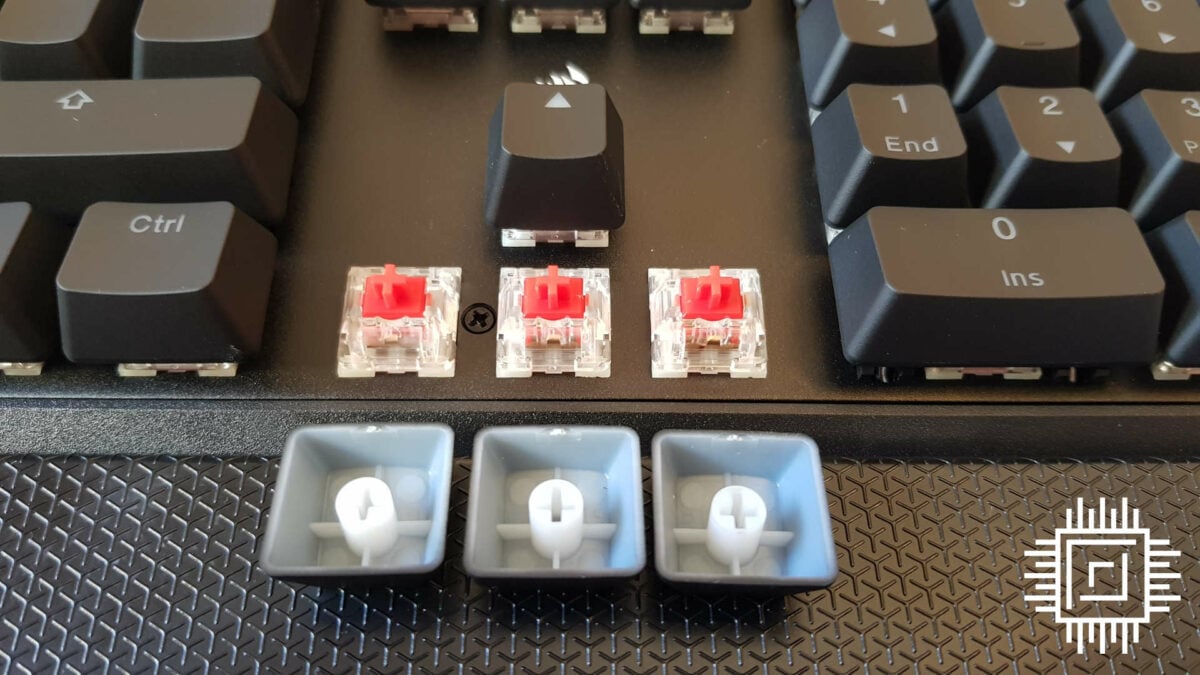
But that’s not all, the K70 Core also houses two sound-dampening layers which enhances typing acoustics. This gives it a more suppressed and bassy sound that feels less aggressive on the ears. It definitely sounds better than the K70 Pro RGB OPX.
To sum it up, if the OPX switches are purely performance-oriented, the MLX Red switches by comparison are designed for an enjoyable typing and gaming experience. For the time being, the MLX switches are exclusive to the K70 Core RGB, though they’ll be making their way to future keyboards later.
Processing
While there isn’t much to say in this department, it doesn’t mean the K70 Core is bad in any way. You still get a super quick 1,000Hz polling rate, ensuring each keystroke is sent ASAP to the host machine. Plus, the wired connection means you don’t have to worry about wireless interference or range.
You can, however, customise the debounce delay in milliseconds and change the polling rate to refreshes as low as 125Hz. If you’re a console player, there’s also an option to enable PlayStation mode, which lets you use your keyboard with your console to play games like Fortnite. Previously, this was done via a physical switch.
Build
The K70 Core is a full-size mechanical keyboard measuring 448mm (L) x 135mm (W) – 210mm wide with a wrist rest. It’s a bit smaller than the Corsair K70 Pro RGB OPX which has a sort of forehead that adds a couple of centimetres. It’s made mostly of plastic with an aluminium top plate. This makes it quite light at about 1kg (0.8kg without the wrist rest).
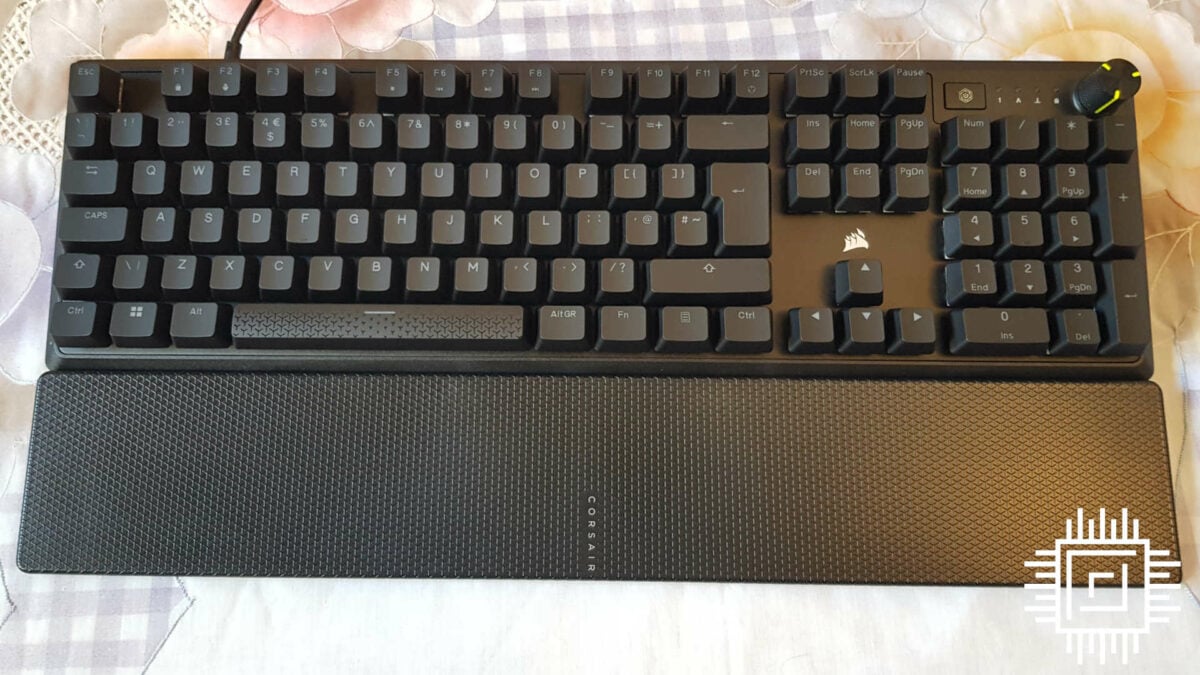
Even though it’s mainly made of plastics, it’s still quite rigid. Yes, the keyboard will flex with a bit of force, but as Apple would say, you’re using it wrong. Jokes aside, the build quality is good, the keycaps don’t wobble too much, and RGB lighting shines perfectly through the letters.
Yet these are not the aspects that caught my attention the most during use. That honour is taken by the smooth rounded edges. They are much more pleasing both to the eyes and to the touch. Plus, to top it off, the colour is consistent between the plastic and metal sections, which is not always easy to pull off. I also like that there isn’t much branding in your face, there is only a small Corsair logo between the arrow and end key.
Talking of which, the double-shot ABS keycaps feature what I would qualify as a grip layer. This means that your fingers will slip less when gaming. I find this aspect both good and weird. On one hand, I really like the feeling when typing, as it combines perfectly with the lubed switches. On the other, I’m not yet used to this adherence when playing games, since it makes it harder to quickly slide fingers between keys. That’s not to say you can’t game on it, quite the opposite. This keyboard didn’t skip a beat when running for my life during the Normandy landing in Enlisted.
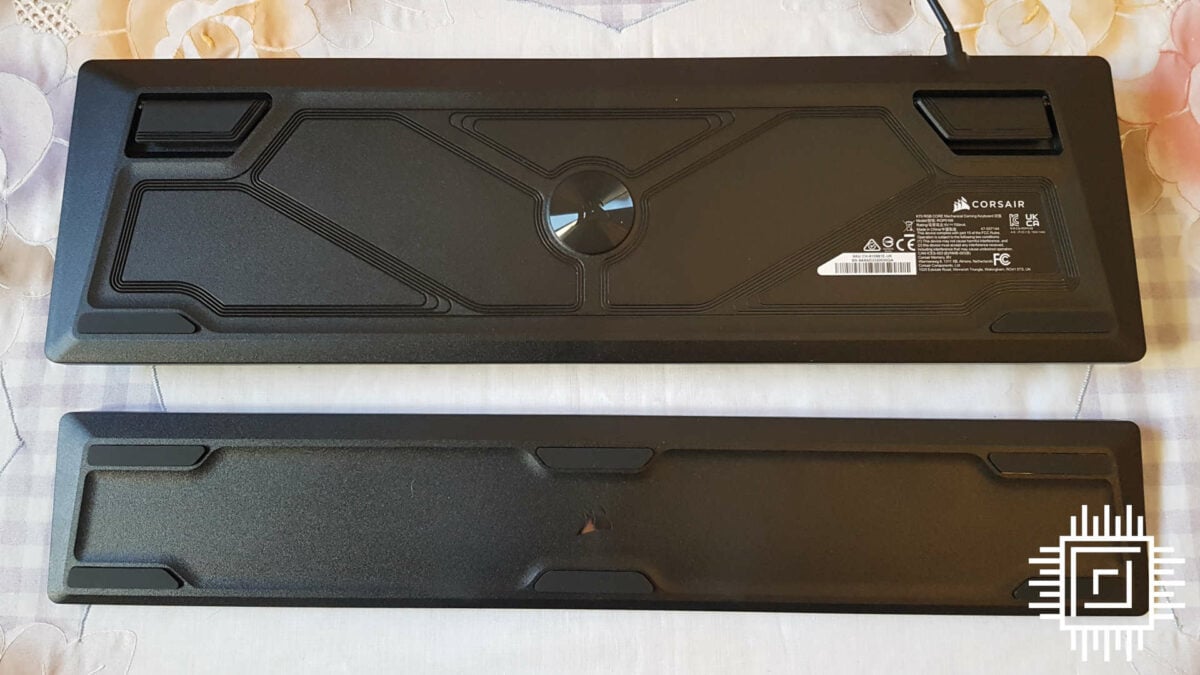
Another thing that may be a bummer for some is the fixed rubber cable. I don’t know how much including a removable USB increases the build cost, but you can’t put a price on the environment. You can still use a detachable USB cable to connect other devices even if the keyboard itself no longer works. It’s also handy for repairability if the rubber frays, since it’s not as durable as a braided one. Off the top of my head, I use a detachable wire regularly to charge a wireless mouse at night and even when cleaning my keyboard and desk so I don’t fight with my PC’s rear IO. It’s a shame not to see one here.
If you choose so, the K70 Core also comes bundled with a plastic wrist rest that connects using magnets. While its edges are well rounded, the texture is not great. If you swipe your wrist when using the keyboard, chances are you’ll feel uncomfortable. For this reason, I would advise you to go with the cheaper base K70 Core and getting yourself a separate padded rest if you need one. You may even end up paying less in total. At least the magnets are powerful enough to pull the keyboard without disconnecting.
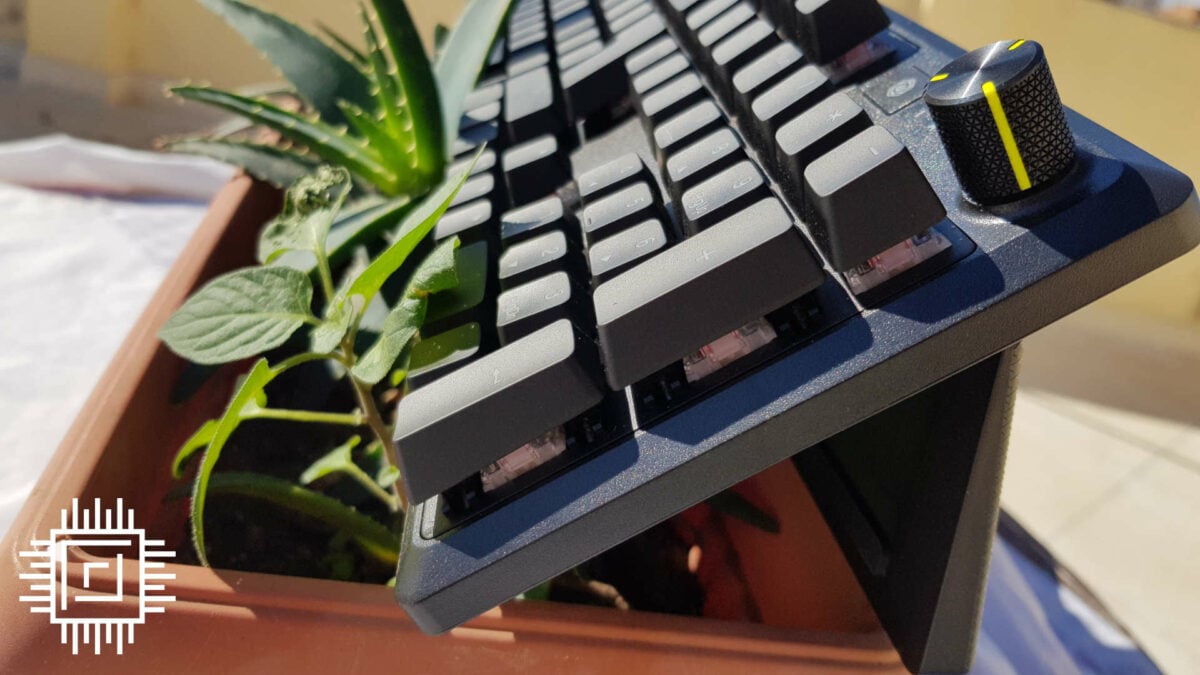
Going back to the positive notes. The K70 Core features a customisable dial on the top right corner. This knob can control the backlight brightness, the vertical scrolling, the volume, and more. There’s also a small foam patch just under the space bar that helps reduce the noise, all while offering a better feeling click.
While you may see many complaints in this section, they’re mostly insignificant. The important parts are all good. It’s just essential to get a rounded picture before you purchase, just in case one is particularly annoying for you. However, I am confident that the majority of users will be very happy with this keyboard.
Software
Corsair’s iCUE is now a very powerful bit of kit, offering countless customisation options depending on the product. On K70 Core, you will be able to change the mapping of each button, add a secondary action when combined with the FN key, or simply change the lighting to your liking.
With Corsair’s robust lighting configurator, you can choose any combination of colours. You can change these per key, or in groups to make special effects, so the only limit is your imagination. All these settings and more are stored in one of the five available onboard memory slots, meaning you can use them on any machine, even if it isn’t running iCUE, which is fantastic.
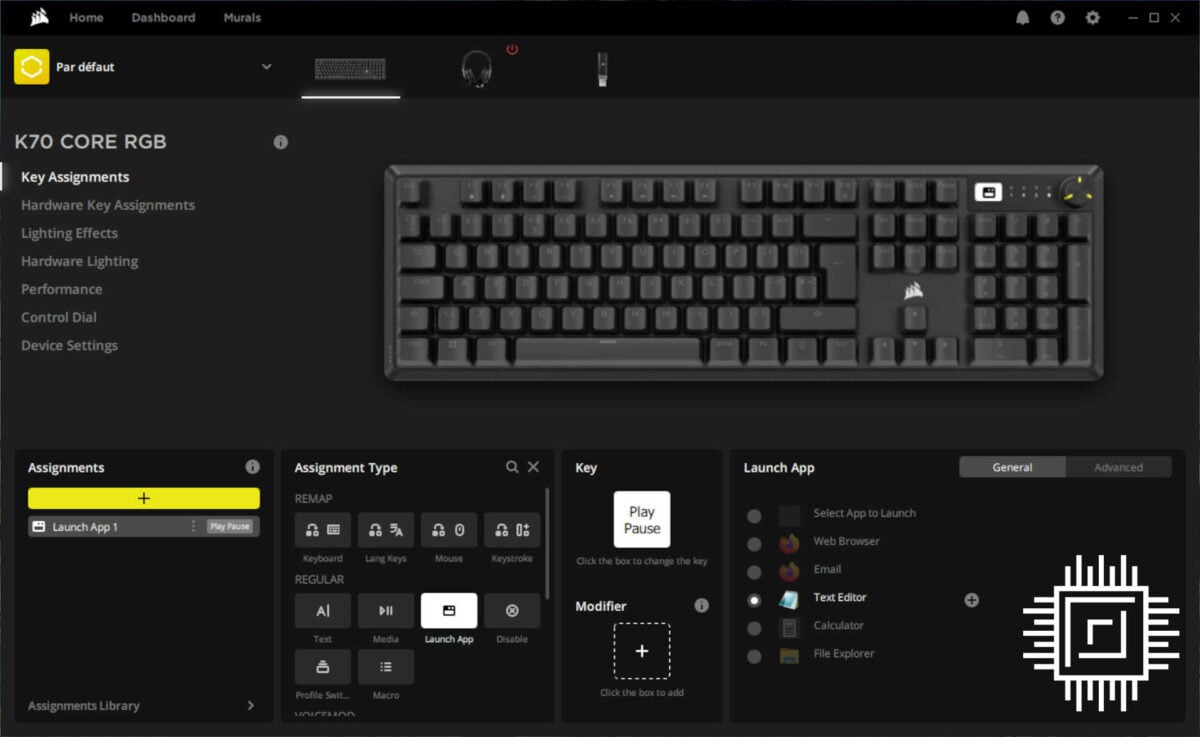
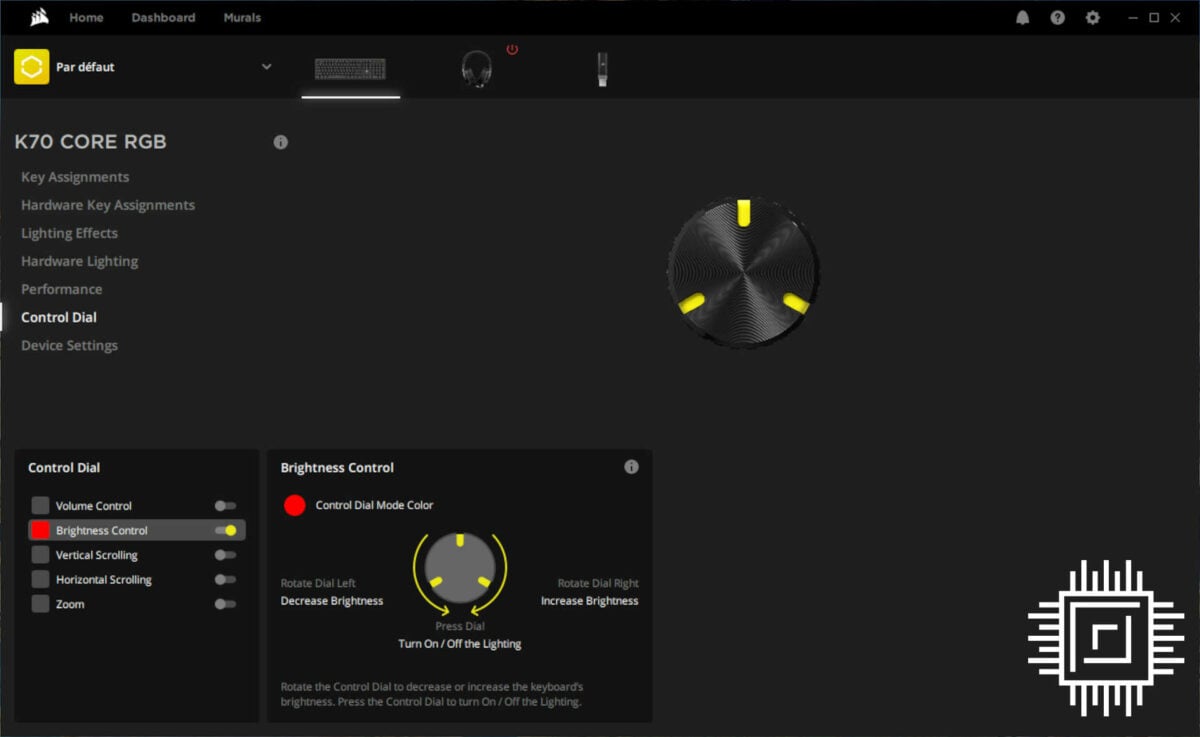
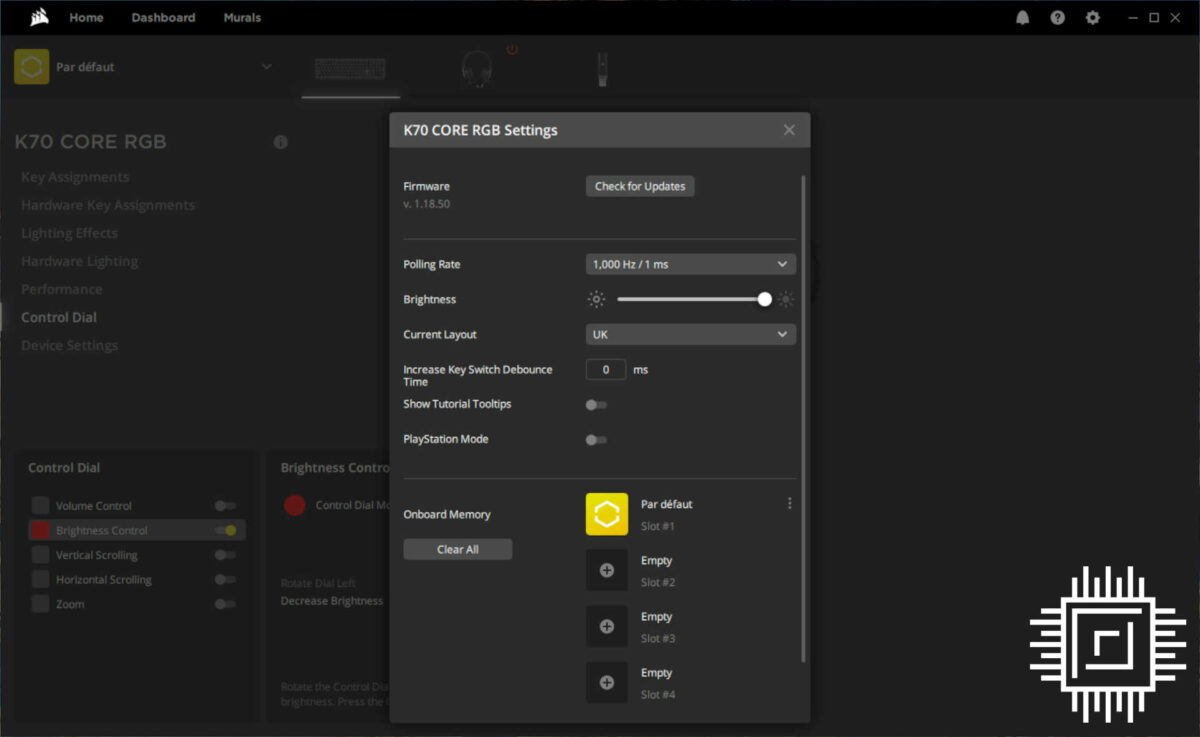
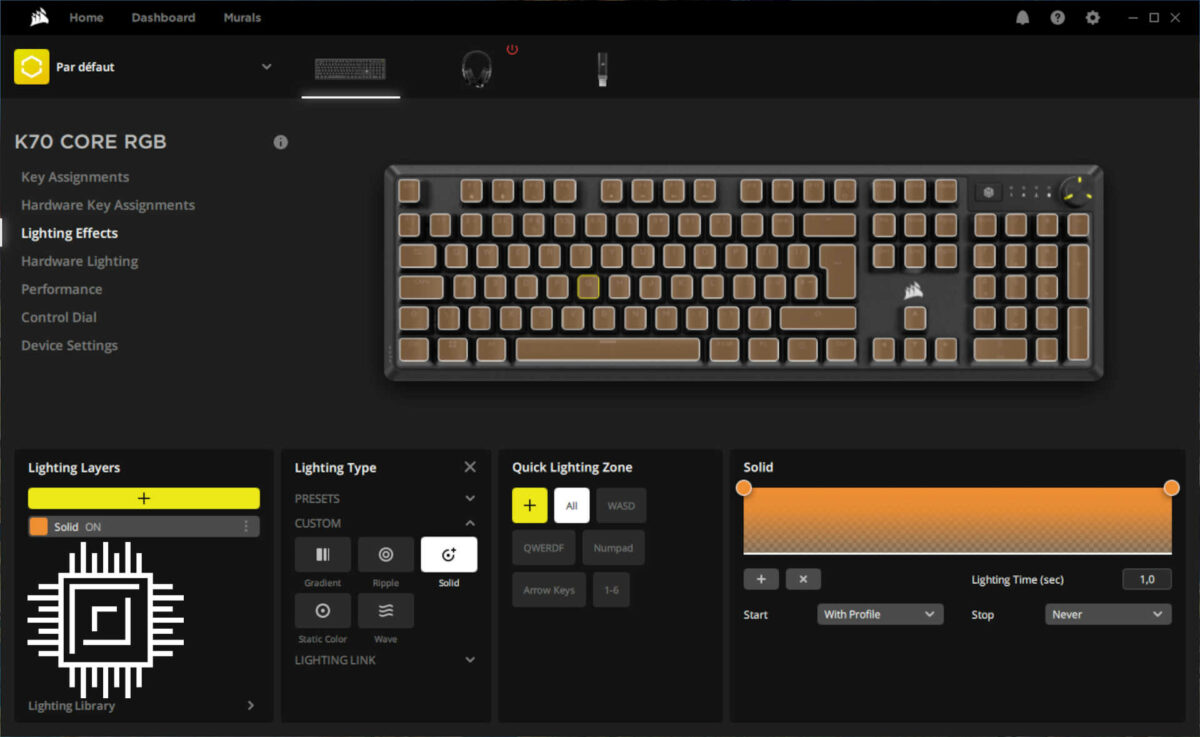
In addition to the regular keys, you can program both the dial and the button with the iCUE symbol to do different tasks. The latter plays and pauses media by default, but you can change it to launch apps for example. I disabled all dial options, only leaving the one controlling the backlight, this way I can reduce brightness at night. I have a wireless headset with its own volume wheel, so I don’t need any extra sound controls.
Kudos to iCUE for detecting my previous K70 Pro RGB OPX lighting settings and directly applying them to this new keyboard. This is what I call seamless integration.
Conclusion
The Corsair K70 Core focuses on what makes a keyboard good, and delivers. Here, you won’t find any fancy optical/magnetic switches, addon displays, or dedicated macro buttons. Just your good old 105 keys using quality switches and offering robust customisation. The pre-lubed Red switches are definitely the star of the show. They’re one of those things that you don’t care about until you try and no longer can live without.
Now that I can use either this one or the Corsair K70 Pro OPX, I’m torn between both. On one hand, the K70 Pro packs unique switches but most importantly a removable USB cable for easy cleaning. On the other the K70 Core has fantastic acoustics and typing feel. Since I spend the majority of my time typing, the K70 Core seems to be the better choice. The jury is still deliberating.
If you have a budget around £100, you should definitely consider this one.
Verdict: A typing experience better than higher-tier products.


